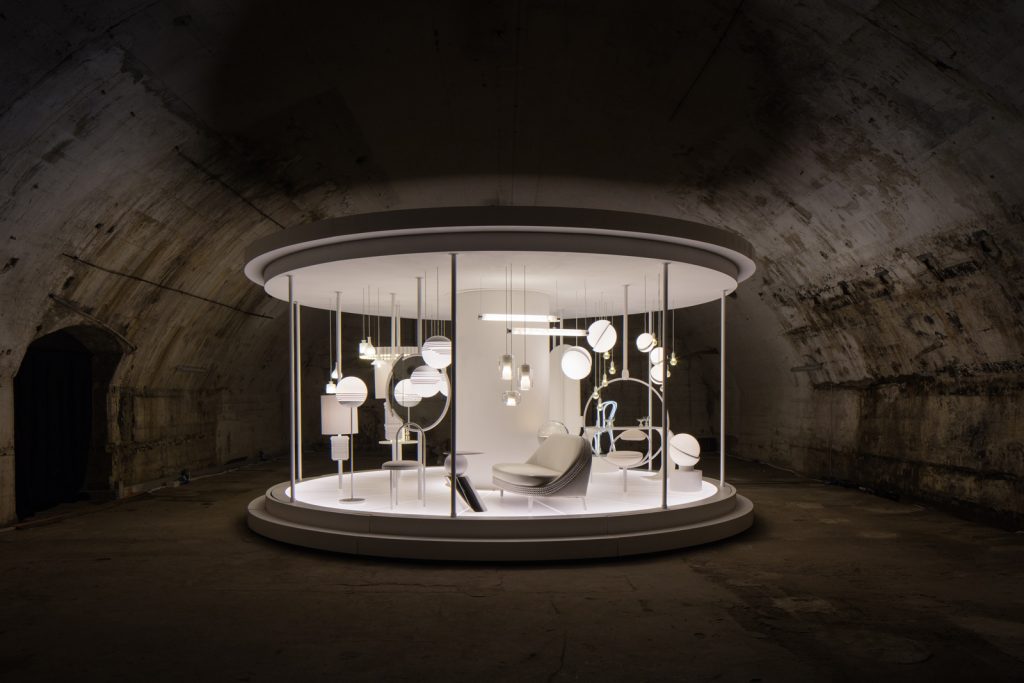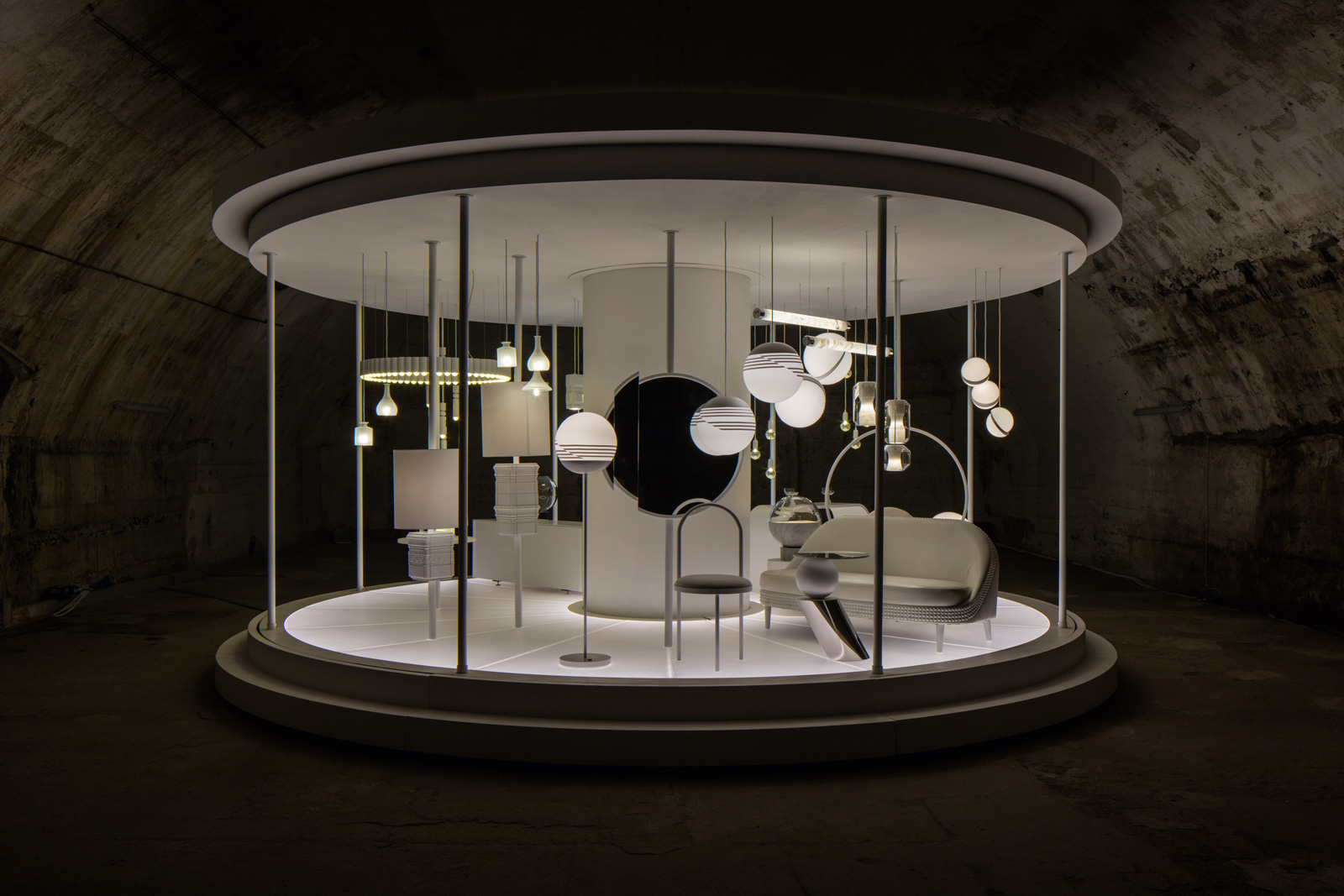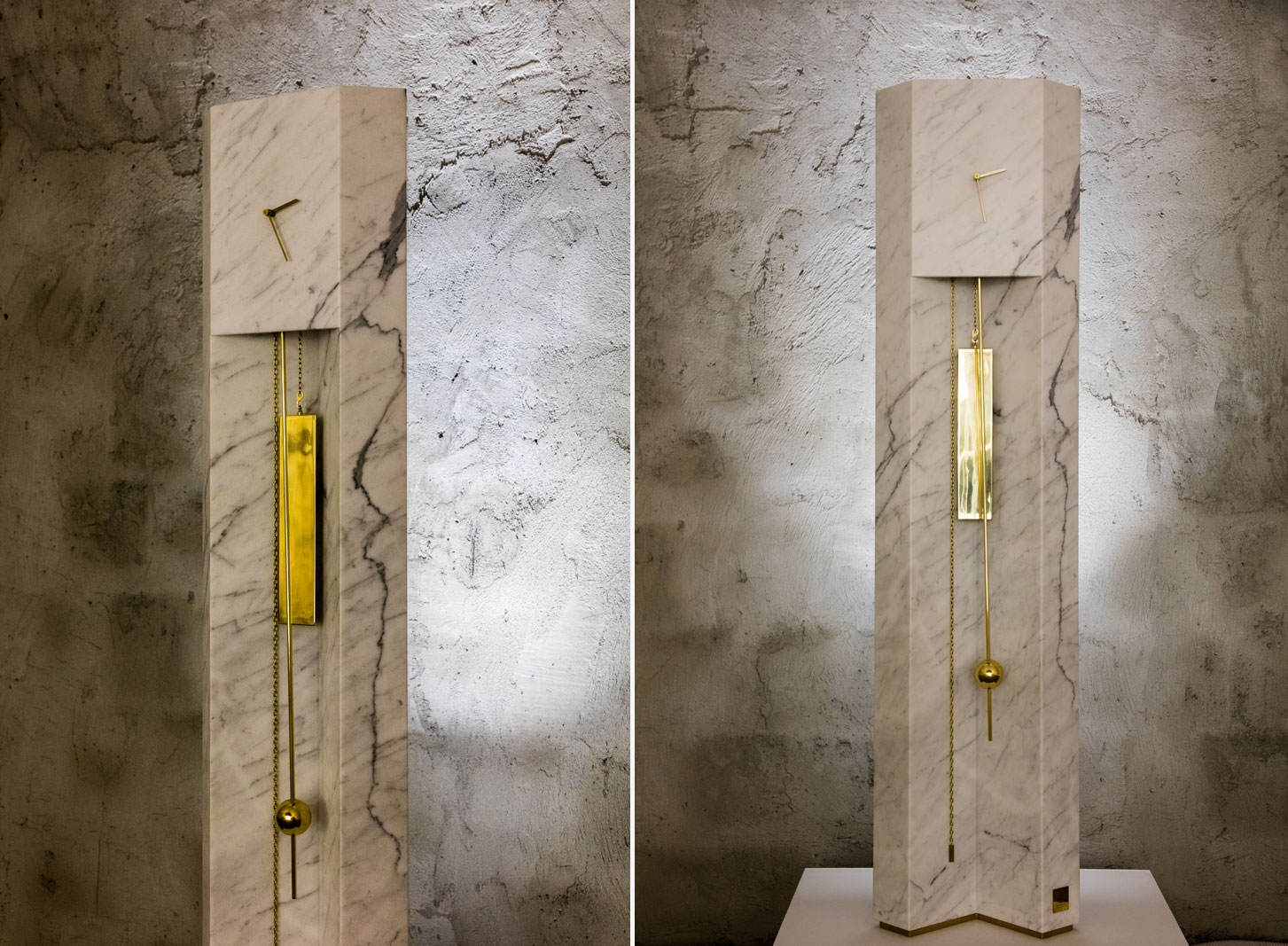Milan Design Week 2017: Lee Broom’s “Time Machine”
A landmark 10th anniversary installation featuring limited edition reissues and a striking debut

Within an abandoned vaulted storage room next to the historic Milano Centrale station, a white carousel spun—the only object in a raw, unfinished space. On that carousel, visitors found reimaginings of furniture, objects and lighting drawn from ten years worth of English designer Lee Broom‘s collections. As part of Milan Design Week 2017 Milan Design Week, Broom’s “Time Machine” exhibition was exactly that—a referential timeline of the designer’s development over the last decade. All the reimagined objects feature his signature geometric and architectural style, presented in new materials and finishes and limited to an edition of only ten pieces each. The hero product was his latest—”Time Machine,” a handcrafted Carrara marble grandfather clock (which is also limited to ten pieces) which also lent its name to the overall presentation. Together, the collection captures the magnificence of Broom’s work, as both a catalog of well-executed ideas and as a conceptual exhibition unto itself.

With ten years worth of work and disparate collections to draw from, the editing process for “Time Machine” was quite comprehensive. “It was a mixture of what I am known for, such as the Crystal Bulb and Crescent Light,” he says, “what were my favorites such as the Drunken Table, and what worked as part of the installation. I chose just over 30 in total out of 100 pieces that I have designed.” In a way, this process was driven by both emotion and logic. “As I was looking back on the pieces I had created over the past 10 years and deciding which ones to display, I felt like it was almost too easy to simply display my work in a retrospective style,” says Broom. Thus, the unique space, carousel-concept and beautiful soundscape were developed to make this more than a staid, nostalgic exhibition.

We pressed Broom on which was the most impactful reimagining. “Probably the Shadow Cabinet,” he continues. “Originally this was created with vertical facets in American Walnut and brushed brass. From one direction the cabinet appears as if it is all brass and from the other it appears to be Walnut.” Regarding the limited edition update he shares that “I lacquered one side of the facet in white satin and the other in a white matte, so the differences were very subtle but the effect was really beautiful. Like an exaggerated shadow.”

At the heart of it all stands the eponymous Time Machine—a neolithic Carrara marble grandfather clock—something Broom has long wanted to design. “My grandparents had one in their home and I was always fascinated by its majestic appearance and its intricate mechanisms as a child,” he explains. “Given our decade in design, it felt like the right moment to design one. It was important to create something contemporary that was very opposite to the traditionalism usually associated with grandfather clocks, so I started to look at a more modernist silhouette, creating very faceted angles and straight lines.”

Broom wanted to keep a traditional grandfather clock mechanism within, which typical works based on the movements of two or three weights. From here, he made structural and aesthetic adjustments. “I wanted to have just one [weight] so we modified and adapted the mechanism with some help and advice along the way from a retired clock enthusiast and persistence paid off,” he says. “The result was that the clock has just one central weight which mirrors the contours of the inner clock chamber.”

Given Broom’s history of clever and theatrical installations at Milan Design Week “Time Machine” will likely be remembered for one of the most dramatic, for both its simple but high concept installation and the first-ever limited editions of his favorite pieces. Broom was one of six companies to show at the debut Ventura Centrale location (the group also organizes the Ventura Lambrate neighborhood’s Fuorisalone presence). With Milan Design Week now completed, all that’s left are visuals and the emotional resonance. It is a strange feeling,” Broom comments. “You work for months on the project, you then set up the show in five days with no real time to review or tweak anything, and then people literally start flooding in, taking pictures, asking questions.” Only after the fact—a consistent queue of visitors—did Broom have an opportunity to acknowledge what he and his team accomplished. “I am delighted with the presentation,” he concludes. “As a designer, if you can realize 90% of the vision you had in your head, then you have done your job and I felt we absolutely achieved this.”
Portrait by Josh Rubin, installation images courtesy of Luke Hayes












